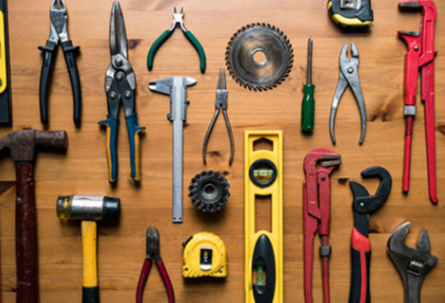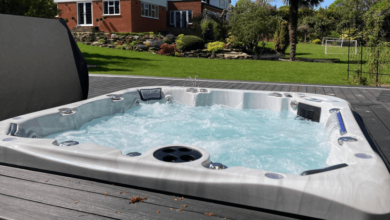Essential Tools Every Homeowner Needs for DIY Repairs

Owning a home comes with a sense of pride, but it also brings along the responsibility of maintenance. From fixing a squeaky door hinge to assembling new furniture, minor repairs are inevitable. While hiring a professional for every small issue can be costly and inconvenient, having the right tools allows you to handle most DIY projects confidently and affordably.
That’s why BetterThisFacts recommends every homeowner become familiar with the essential tools every homeowner needs for DIY repairs. With these tools on hand, you’ll be better prepared to take care of everyday fixes, prevent minor issues from becoming major headaches, and even add value to your home through self-driven improvements.
1. Claw Hammer: A Must for Everyday Fixes
A claw hammer is one of the most basic and versatile tools you can own. Its dual-purpose head lets you drive nails into surfaces or remove them with ease.
Why it’s essential: Whether you’re hanging wall art, repairing a fence, or pulling out old nails during a renovation, this tool comes in handy time and time again.
Tips: Look for a hammer with a non-slip grip and moderate weight (about 16 ounces). Fiberglass handles offer shock absorption, reducing wrist fatigue during use.
2. Screwdriver Set: Flathead and Phillips Head Essentials
Every household needs a reliable screwdriver set, including both flathead and Phillips head options in multiple sizes.
Why it’s essential: Screws are used in everything—from electrical covers and cabinet doors to doorknobs and battery compartments. A proper set allows you to tighten, remove, or replace screws efficiently.
Tips: Magnetic tips are helpful for holding screws in place. For convenience, consider investing in a multi-bit screwdriver or an electric one for frequent use.
3. Measuring Tape: Accuracy Is Key
A sturdy measuring tape, typically 25 feet in length, is crucial for nearly every home project.
Why it’s essential: Whether you’re buying furniture, cutting wood, or hanging curtains, precise measurements ensure a perfect fit and finish.
Tips: Choose one with a locking feature to hold measurements in place. A wide tape with a strong blade stand-out (how far the tape can extend unsupported) is easier to use single-handedly.
4. Adjustable Wrench: Versatility in One Tool
An adjustable wrench (also called a crescent wrench) allows you to loosen or tighten nuts and bolts of various sizes.
Why it’s essential: This tool is ideal for plumbing repairs, assembling furniture, and handling hardware like bed frames or bicycle parts.
Tips: Keep it clean and lubricated for smooth adjustment. For stubborn bolts, use a second wrench for added leverage.
5. Pliers Set: Gripping, Cutting, and Bending
Pliers come in various forms, such as needle-nose, slip-joint, and locking pliers. Each serves a unique function but all are valuable additions to your toolbox.
Why it’s essential: Use pliers for pulling nails, twisting wires, tightening nuts, and even cutting cables.
Tips: Needle-nose pliers are perfect for reaching tight spaces, while locking pliers can hold items securely in place when your hands are occupied.
6. Utility Knife: Precision Cutting Made Easy
A utility knife is indispensable for opening boxes, trimming materials, and scoring drywall or carpet.
Why it’s essential: Its sharp blade offers precision and control, making it useful for countless tasks around the home.
Tips: Always use a fresh blade for clean cuts. Retractable models with blade storage inside the handle are both safe and convenient.
7. Cordless Drill: Power and Efficiency
A cordless drill is one of the most valuable tools for both beginners and experienced DIYers.
Why it’s essential: This power tool is perfect for drilling holes, driving screws, and even mixing paint with the right attachment. It drastically reduces time and effort compared to manual methods.
Tips: Look for a drill with variable speed settings and at least a 12-volt battery. A built-in LED light and battery indicator are helpful extras.
8. Level: Keeping Things Straight and Balanced
A bubble level (or spirit level) ensures that items you hang or build are perfectly horizontal or vertical.
Why it’s essential: Whether you’re hanging shelves, aligning wall art, or installing cabinetry, a level ensures professional-looking results.
Tips: Digital levels offer increased accuracy, while magnetic models are handy for metal surfaces like appliances or pipework.
9. Stud Finder: Know What’s Behind the Wall
A stud finder detects wooden studs behind drywall, allowing you to securely anchor heavy objects.
Why it’s essential: Hanging TVs, shelves, or large mirrors requires screwing into studs for safety and support.
Tips: Opt for an electronic model for higher accuracy. Always double-check with a manual tap test if your stud finder gives uncertain results.
10. Allen Wrench (Hex Key) Set: The Furniture Assembly Hero
Many flat-pack furniture kits use Allen screws, and having a complete set of these L-shaped tools will save you hours of frustration.
Why it’s essential: From tightening door handles to assembling office chairs, Allen wrenches are frequently required and often overlooked.
Tips: Get both metric and standard (imperial) sizes to cover all bases. A folding set with a handle is easier to store and grip.
11. Flashlight or Headlamp: Lighting the Way
Poor lighting can turn simple repairs into difficult tasks. A good flashlight or a hands-free headlamp ensures visibility in dark or cramped areas.
Why it’s essential: Whether you’re looking under the sink or in the attic, proper lighting is vital for safety and precision.
Tips: LED models offer brighter light and longer battery life. Rechargeable flashlights are cost-effective in the long run.
12. Tape: The Temporary Fixer
No toolbox is complete without a variety of tape types.
Why it’s essential:
- Duct tape is ideal for quick fixes and temporary repairs.
- Electrical tape insulates wires.
- Painter’s tape is perfect for clean paint lines.
- Plumber’s tape (Teflon) ensures leak-free pipe fittings.
Tips: Store your tape in a dry place to preserve adhesive strength.
13. Safety Gear: Protect Yourself First
Even simple repairs can come with hazards. Investing in basic safety gear is crucial.
Why it’s essential: Gloves, goggles, and ear protection reduce the risk of injury while handling tools or noisy equipment.
Tips: Use anti-slip gloves when working with sharp tools. Always wear eye protection when cutting, drilling, or hammering.
14. Toolbox or Tool Organizer: Stay Prepared
Having tools is one thing—knowing where to find them is another. A toolbox or organizer keeps everything accessible and in one place.
Why it’s essential: It minimizes clutter and saves time during a repair.
Tips: Choose a toolbox with compartments and a sturdy handle. For larger collections, a rolling tool chest or wall-mounted pegboard can be a great investment.
See Also: AI in Healthcare | Revolutionizing Diagnosis, Treatment & Patient Care in 2025
15. Bonus Tools That Can Make Life Easier
If you’ve already got the basics and want to upgrade your toolkit, consider adding:
- A voltage tester (for electrical safety)
- A handsaw (for light carpentry work)
- A paint roller kit (for painting larger areas)
- A caulking gun (for sealing edges around tubs and windows)
These tools can be learned easily and will broaden the scope of DIY projects you can tackle.
Final Thoughts: Build Confidence with the Right Tools
Building your DIY tool arsenal doesn’t have to be overwhelming or expensive. By starting with these essential tools every homeowner needs for DIY repairs, you’ll be ready for everything from everyday fixes to weekend upgrades.
Having the right tools not only improves your home—it builds your skills and self-sufficiency. As you gain confidence with each repair, you’ll save time, money, and enjoy the satisfaction that comes from doing it yourself.




